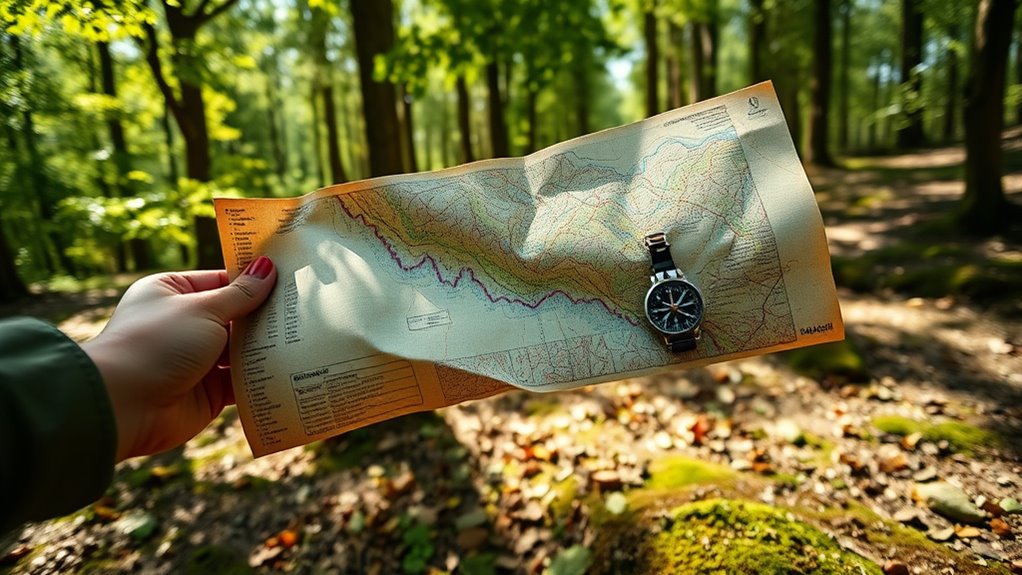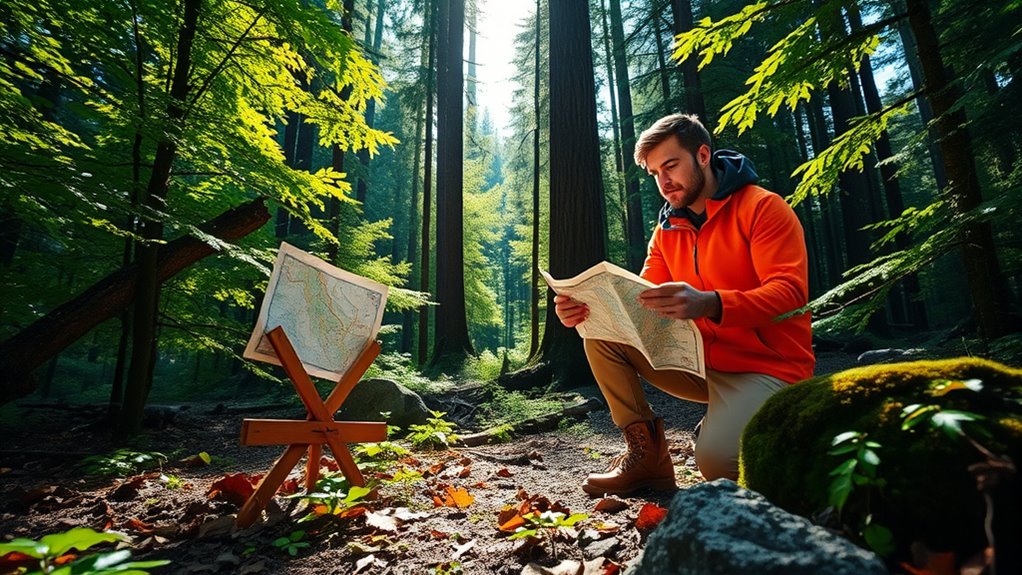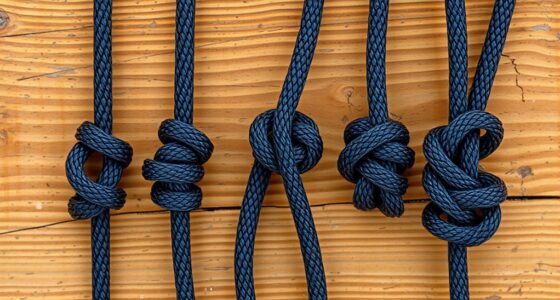Orienteering with a map and compass boosts your navigation skills in outdoor environments. You’ll learn to interpret terrain features, natural landmarks, and trail markers, even when signs are missing or trails are faint. This skill set helps you confidently chart routes, rely less on digital devices, and adapt to unexpected challenges. If you keep exploring, you’ll discover even more techniques to enhance your outdoor adventures and navigate safely in any terrain.
Key Takeaways
- Master map reading and compass skills to navigate accurately in outdoor environments.
- Use natural terrain features and environmental clues to supplement trail markings.
- Set precise bearings and align the map with real-world features for effective route planning.
- Develop problem-solving and decision-making abilities when trail signs are missing or unreliable.
- Gain confidence and independence by relying on traditional navigation tools over digital devices.

Orienteering with a map and compass is an engaging outdoor activity that challenges your navigation skills and sense of direction. It requires you to rely on traditional tools, honing your ability to interpret terrain features and make quick decisions. Unlike gps navigation, which offers digital guidance, orienteering pushes you to stay alert and adaptable, especially when trail markings are faint or missing. You learn to read subtle clues in the environment, such as natural landmarks, contour lines, and vegetation changes, to stay on course.
Orienteering with map and compass sharpens navigation skills amid faint trail markings.
When you’re out in the wilderness, trail marking can be inconsistent or absent altogether. That’s where your skills with map and compass come into play. Instead of depending on digital signals, you learn to identify features on the ground that match your map. For example, a bend in a stream or a cluster of rocks can serve as vital reference points. Trail marking might be unreliable or nonexistent, so you develop the ability to create mental or physical trail markers to prevent losing your way. If you’re navigating through dense forest or rugged terrain, this skill becomes even more crucial. You might leave small, discreet markers along your route—like stacking stones or tying knots—to help you retrace your steps or mark important turns.
Using a compass alongside a topographic map allows you to set precise bearings and understand your orientation relative to the landscape. Once you determine your current position, you can plot a course to your destination, adjusting for obstacles or terrain features. This process sharpens your spatial awareness and boosts confidence when digital navigation tools fail or are unavailable. Practice becomes essential; as you become more familiar with reading terrain and aligning your map with real-world features, your ability to navigate without GPS improves markedly. This independence is especially valuable in remote areas where signal loss is common or in situations where electronic devices might malfunction.
Ultimately, orienteering with a map and compass isn’t just about reaching a point; it’s about developing a deeper connection with your environment. It teaches patience, problem-solving, and observation skills that are useful beyond outdoor activities. Trail marking, combined with a good grasp of navigation principles, ensures you can maintain your route even when trail signs are missing or obscured. Additionally, understanding the importance of creative problem-solving can help you adapt to unexpected challenges during your navigation. You gain confidence in your capacity to explore unknown areas safely, making every expedition a rewarding challenge. Whether you’re heading into the woods for recreation or preparing for survival scenarios, mastering these skills guarantees you stay oriented and enjoy the journey with clarity and purpose.
Frequently Asked Questions
What Are the Best Beginner-Friendly Orienteering Maps?
You should start with beginner-friendly orienteering maps that clearly show map symbols and terrain features. Look for maps with simple, distinct symbols for features like paths, water, and vegetation. These maps often have less complex terrain, making it easier to identify key features quickly. Practice by studying the symbols and terrain features carefully, so you can confidently navigate and develop your skills without feeling overwhelmed.
How Do I Choose the Right Compass for Orienteering?
When choosing a compass for orienteering, you should consider different compass types, like baseplate, lensatic, or thumb compasses, and pick one that suits your training level. Look for features such as a clear directional needle, rotating bezel, and luminous markings for easy reading. A good beginner compass is lightweight, durable, and easy to handle, helping you navigate accurately and confidently in various terrains.
Can Orienteering Be Done Indoors or in Urban Areas?
Yes, you can do orienteering indoors or in urban areas. Indoor navigation and urban orienteering challenge you to use your map and compass skills in complex environments. You’ll navigate through buildings, malls, or city streets, making quick decisions and adapting to new landmarks. This variation improves your overall navigation skills and keeps the activity exciting, especially when outdoor options aren’t available or weather conditions are unfavorable.
What Safety Gear Should I Carry During an Orienteering Event?
Think of your safety gear as your shield on the trail. You should carry an emergency kit, including a first aid supplies and a whistle, to handle unexpected situations. Don’t forget hydration essentials like water bottles or electrolyte drinks to stay energized. These items keep you prepared and resilient, ensuring you can navigate confidently while protecting yourself from potential hazards. Always prioritize safety gear to make your orienteering experience both fun and secure.
How Can I Improve My Map Reading Speed?
To improve your map reading speed, you should practice specific techniques like quick identification of key features and efficient route planning. Focus on honing your ability to recognize symbols and terrain at a glance, and regularly practice these skills to build confidence. Practice consistently, challenge yourself with different map types, and simulate real navigation scenarios. Over time, these techniques will become second nature, markedly boosting your map reading speed during orienteering events.
Conclusion
Mastering orienteering with a map and compass transforms you into an unstoppable explorer, capable of conquering even the wildest terrains with unmatched confidence. It’s like wielding a secret superpower that turns dense forests and tangled paths into your personal playground. With every bearing you take and every landmark you navigate, you elevate your skills to legendary status. Embrace this art, and you’ll not only find your way—you’ll redefine what it means to be truly adventurous.









